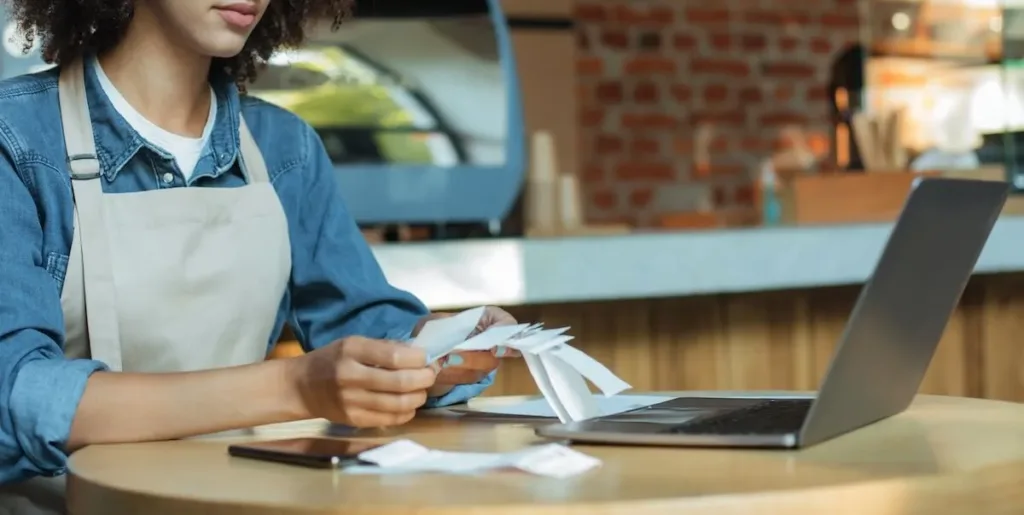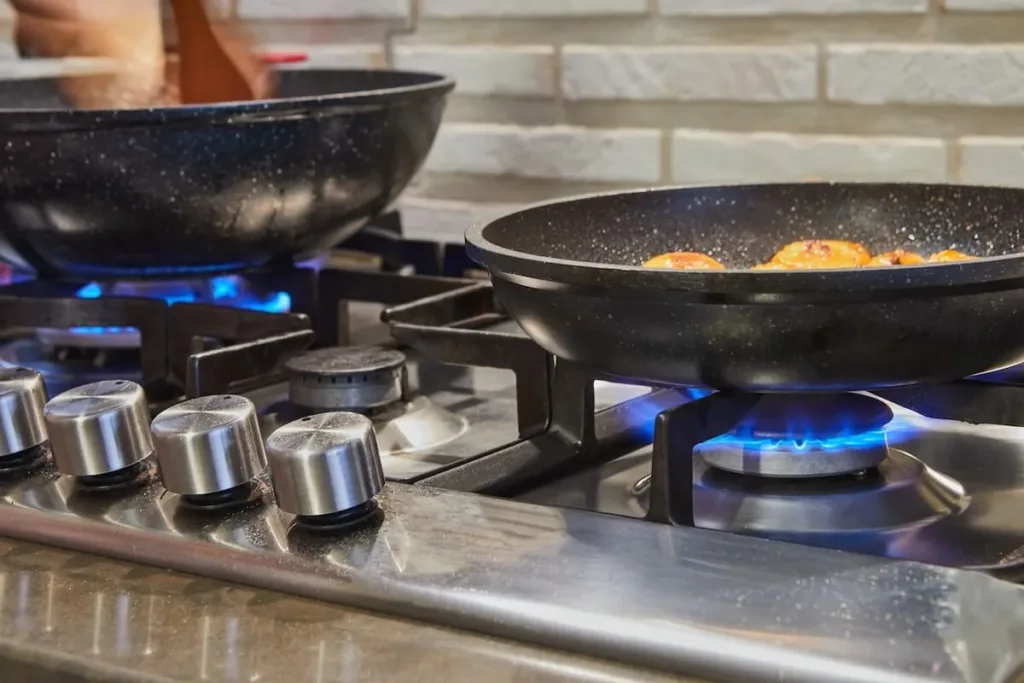6 categories to audit for better restaurant cost control
Skip the article and turn takeaways into action by scheduling a call with our team.
The restaurant industry is famous for tight profit margins, largely due to high overhead and a multitude of additional operating expenses. So, saving money wherever possible is crucial to improving a restaurant’s bottom line and ensuring the business remains profitable. With rising prices across the board, including labor and food costs, restaurateurs must be strategic when navigating the changing marketplace. Implementing a solid restaurant cost control and pricing predictability plan is not optional—it’s a must.
Fortunately, there are several key metrics restaurant owners can consider to reduce unnecessary costs. Smart restaurant management practices can make the difference between just scraping by and truly thriving. Let’s explore some ways to reduce expenses and simplify budgeting through restaurant cost control.
The 6 categories for restaurant cost control

To better understand where you can cut costs in your restaurant, break down your operational expenses into key categories, such as:
- Labor costs
- Food costs
- Utilities
- Taxes
- Equipment and maintenance
- Restaurant software and POS systems
Understanding what drives costs in each of these categories will put you on the path to profitability.
1. Labor costs
Hiring and retaining good staff is one of the toughest parts of running a restaurant. It takes every team member to achieve success, so it’s critical that your staff are both skilled and work well together.
Unfortunately, the restaurant industry is notorious for high employee turnover, with rates around 70% in many cases and even exceeding 120% in quick-service restaurants, according to Cornell. With rising minimum wages increasing labor costs, restaurant owners may find themselves in a pinch, especially if staff leave for competitors offering better pay.
Meanwhile, hiring and training new staff can cost up to $6,000 per individual, according to Cornell.
So while an average labor cost of 30% of total operating expenses is a good target, it often doesn’t account for staff hiring, training, or overtime pay.
Here are a few tips on how to keep labor costs in check:
- Retain good staff to reduce unnecessary labor costs from training and hiring.
- Pay staff as much as possible to keep them happy.
- Offer perks like staff meals, flexible scheduling, and paid time off to boost morale and encourage loyalty.
- Schedule staff wisely to reduce labor costs by not overstaffing on days when business is slow.
Generally speaking, if your labor costs are around 30%, you’re doing OK. But if they’re significantly over, you’ll need to cut shifts or reduce headcount.
2. Restaurant food costs

Keeping a lid on food costs is a key way to lower your overall expenses and boost profits. While we’ve covered food cost percentage and reduction strategies before, it’s worth touching on here, too.
First, take a good look at your menu items. Determine the cost of goods sold (COGS) for each dish to give you an idea of which ones are your most and least profitable. A good rule of thumb for a pricing model is that the menu price of a dish should be on average three times the recipe cost, although there’s some wiggle room for loss leaders and other strategies.
For this reason, the average food cost of a dish should be around 30-35% of its menu price point—good to keep in mind when introducing new products. Additionally, if things are going well, your cost of goods sold will be around 30-35% of total sales as well.
To keep food costs under control, use these strategies to avoid overspending on ingredients:
- Keep your menu small to simplify inventory management and reduce food waste.
- Pay close attention to standardized portion sizes to ensure actual food costs are within your target.
- Don’t overserve. If you notice customers consistently leaving with leftovers, consider reducing portion sizes.
- Practice smart menu engineering to encourage customers to try profitable, tasty dishes that keep both them and your pocketbook happy.
- Maintain a first-in, first-out (FIFO) inventory tracking system, in which perishable ingredients get used in the order they were purchased.
- Get good at forecasting sales to know how much you’ll need to order, since over-ordering can be costly.
- Shop around for restaurant suppliers or local farms that offer better wholesale prices.
- Increase your menu pricing to match rising food costs. With inflation, customers are already used to seeing prices go up.
- Repurpose excess inventory or low-cost items into specials, and advertise them on social media.
If you find that some menu items consistently go over your targeted food costs or are difficult to manage in terms of portion control, consider streamlining your menu by 86’ing them. Cross-referencing your food costs with sales data on a consistent basis gives you insight into what’s working and what’s not.
3. Utilities
You’ve got to have the lights on and the water running in a restaurant — that’s a non-negotiable. What is negotiable, however, is how you use your electricity and water.
One excellent way to reduce utility costs is to switch to energy-efficient appliances like refrigerators, dishwashers, and ovens when possible. While the upfront investment may seem daunting, upgrading your equipment can lead to long-term savings if you have the capital to do so.
Similarly, you can minimize waste by doing simple things like turning the lights off at night, setting refrigerators and freezers to the right temperature, and checking for leaks in the water pipes.
4. Taxes

There are a number of tax benefits and breaks that restaurants should take full advantage of. We’ve gone into detail on restaurant tax deductions, but here are some brief takeaways to get you started. Ask a tax professional about the following deductions:
- Labor costs
- Operating costs like rent, supplies, utilities, and other must-haves
- Advertising expenses
- Food costs
- Employee meals
- Transportation costs
- Asset purchases and improvements
- Repairs and maintenance
- Charitable donations
- Insurance and professional fees, like the services of lawyers and accountants
Be sure to work with a local accountant who understands the ins and outs of tax laws specific to your area, since tax codes can vary significantly by location.
5. Equipment and maintenance

Restaurant equipment can be seriously expensive. Large kitchen equipment items like refrigerators, ovens, dishwashers, ranges, and so on can be one of the biggest costs for a restaurant. Then there’s furniture, silverware, and more. It takes a lot to keep a restaurant running!
However, not all equipment has to be bought brand new. Restaurant auctions can be a great way to cut costs on these large items, as a second-hand range can work just fine. Usually, restaurant auctions take equipment from recently closed food service establishments and resell it significantly cheaper than it can be bought new.
While buying second-hand comes with its risks, there are plenty of opportunities to find top-notch equipment for cheap if you’re lucky. Before making a purchase, take your chef or manager with you to inspect it.
Keeping equipment running well is just as important as getting it in the first place. Although it’s often tempting to put off pricey repairs and routine maintenance, doing so will save money in the long run, since repairing a piece of equipment is almost always cheaper than replacing it. If you hear complaints from your staff about important equipment, don’t delay getting it repaired.
6. Restaurant software costs
Restaurant software can save time and labor while being cost-effective, but expenses can still add up. Purchasing fragmented systems, for example, can lead to a high and often unpredictable spend rate. This can largely be for four reasons:
- Add-ons and extra features can significantly increase costs.
- Fragmented systems cause inefficiencies, such as time spent on staff training or data silos.
- Reservation platform cover fees can reduce profitability.
- Monthly fees, rather than annual contracts, can be significantly more expensive, leading to uncontrolled costs.
Yelp Guest Manager maintains cost predictability for restaurants by addressing these four issues. Its all-in-one package means no additional fees for features restaurants need. In addition to centralizing reservation, sales, and customer data, it syncs with POS systems and inventory management systems to prevent data silos.
No cover fees mean higher profits and fewer fluctuations in revenue. An annual subscription fee can save $30 per month for basic or $70 per month for the pro plan, which translates into hundreds saved in aggregate every year.
Software and POS systems for restaurant cost control

Updating your tech stack can lead to significant restaurant cost controls. Linking up tools that are meant to work together means no extra money spent on overlapping software features, as well as time saved in labor and training.
Running a modern restaurant goes much smoother when using modern restaurant software. This includes point-of-sale (POS) systems as well as front-of-house (FOH) management tools. Going for the best in the business can help make the lives of your staff easier while improving the customer experience. So, what should you look for?
FOH management software
First, you’ll want an FOH system that pairs with the most popular POS systems out there. Most FOH systems, like Yelp Guest Manager, will do this. But there’s a lot more, too. Yelp Guest Manager makes it easy for customers to make reservations, hop on your waitlist, and check themselves in. It also allows for real-time, two-way communication between your establishment and customers.
No-shows can really hurt your restaurant’s bottom line, costing you not only the customers who made the reservation but also others who might have filled those seats. Yelp Guest Manager customers typically have no-show rates below 10%.
Furthermore, Yelp Guest Manager tracks key benchmarks, from food sales all the way down to individual menu items, total sales, and plenty of other restaurant accounting features. It also pairs with popular inventory management systems and online ordering platforms that can further boost sales. If you’re looking to streamline your restaurant management software into one easy-to-use package, you couldn’t do much better.
Automation to the rescue
Software providers can also help with automation. Yelp Kiosk, for example, can replace a traditional host by letting customers check in and seat themselves—freeing up staff and creating a smoother dining experience.
With so many tools becoming available like never before, the field is getting wild. Some new AI tools can automatically update prices based on machine learning, determining costs based on current demand and improving price optimization. This can be especially valuable in an era of inflation and price volatility.
Similarly, new AI inventory management tools gather a number of predictors like your inventory history and preferred orders to automate ordering for restaurants. This can cut down on waste and spoilage, tightening cash flows and encouraging predictable pricing.
Ready to control those costs?
Keeping control of labor costs and food costs is a good place to start for any restaurateur. Staying on top of taxes and utilities and keeping equipment in good repair is a must as well. But switching software can be the dark horse that makes a huge impact, adding an extra element of friendly tech as your ally.
If you want to see just how the best restaurant tech can be your ally, reach out to us for a free demo of Yelp Guest Manager. A successful restaurant has a lot of moving parts, and getting them all in one place can be a godsend for busy restaurateurs.